Complimentary worldwide shipping on orders over $400 · No import tariffs for most countries
Complimentary worldwide shipping on orders over $400 · No import tariffs for most countries
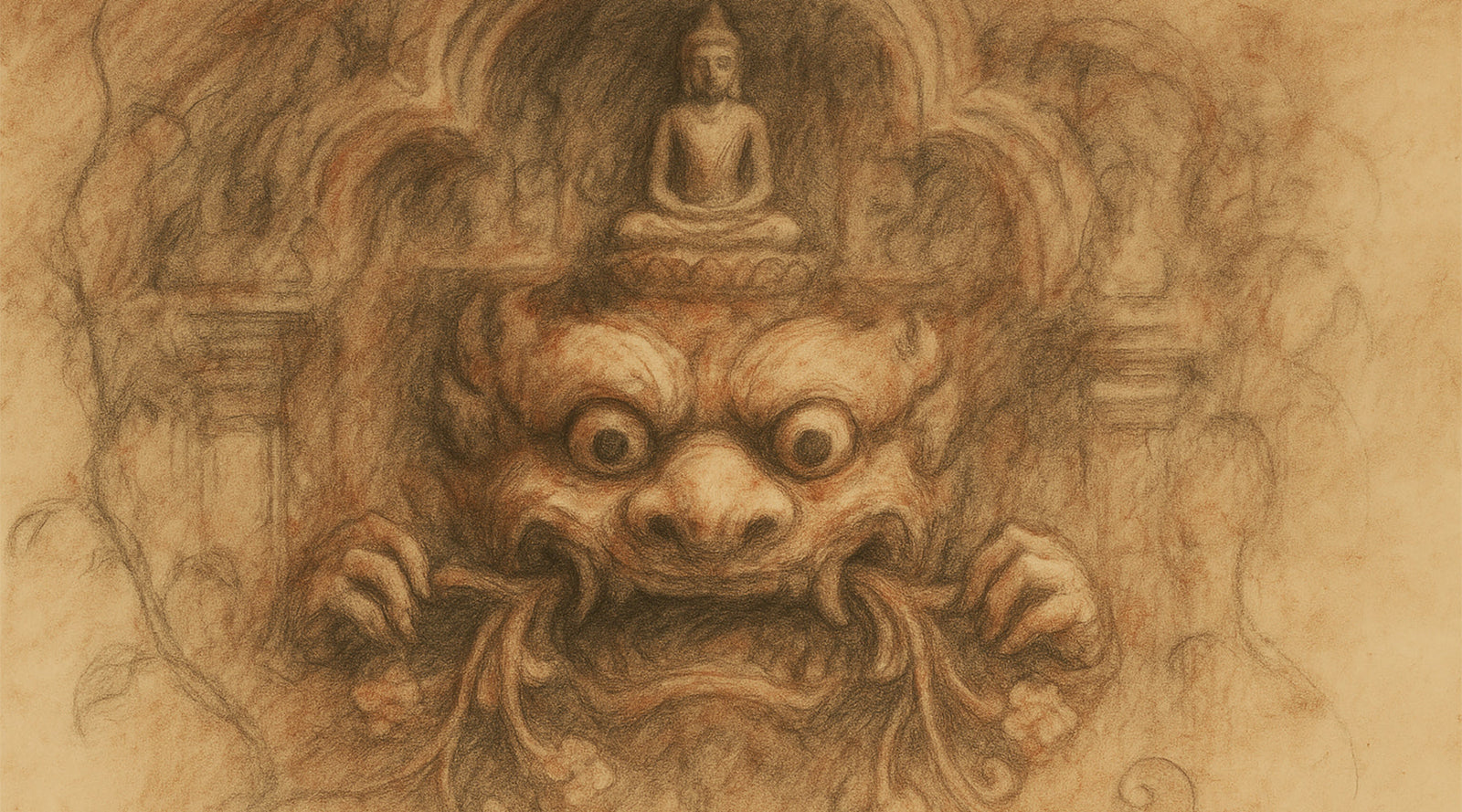
The Mouth of Time: On the Kala at Angkor
3 min read
He who devours ages but has no voice—
what silence does he guard?
—from a field note in the galleries of Preah Khan
—
There are faces in stone that do not speak,
and yet say more than scripture.
Faces without names, without mouths—
only teeth, eyes,
and the long hush of centuries.
Among these, the kala stands apart.
Strange. Monstrous. Unmistakable.
It watches from above:
a lintel guardian,
a devourer at the threshold,
the mouth through which the temple breathes.
In every sacred place, there is a moment of entry.
Not the footstep—
but the passing through.
Between sun and sanctum.
Between the world
and what waits behind it.
The kala marks that crossing.
—
Carved high above the doorways of Angkor,
its presence is easy to miss—
but never forgotten.
Its eyes are round and unwavering.
It does not blink.
It does not yield.
It is not a being, not exactly.
It is a mouth.
A presence.
A mask.
There is no lower jaw—
only the upper teeth,
set in a fixed, eternal grin.
From its fangs, garlands pour:
vegetal ribbons of breath and time,
sometimes grasped by small, clawed forearms
that emerge like vestiges of a forgotten incarnation.
The hands do not threaten.
They hold.

From the upper jaw of time,
the garlands of what cannot be spoken.
Some have called it lion-headed.
Others see in it the dry skulls once mounted
at the roofs of Oceanic shrines—
lower jaws lost as the flesh fell away.
Henri Marchal imagined this very likeness:
a fossil of awe,
preserved in stone.
But the kala is not merely echo or relic.
It is a guardian.
A force.
A kind of divinity.
In Khmer cosmology—
as in the Hindu origins it echoes—
the kala is linked to Shiva,
not as a figure, but as emanation.
It does not bless.
It defends.
To pass beneath the kala
is to be seen
by something older than judgement.
—
The name itself bears gravity.
Kala—from Sanskrit—means “time.”
But not mechanical time.
Not the time of hours or calendars.
This is time as devourer.
Time as dissolution.
Time as the mouth that consumes all things
and leaves only stillness.
In India, the kala becomes kīrtimukha—
the “face of glory”—
which sometimes retains its lower jaw.
But in Cambodia, that jaw disappears.
What remains is a mouth that cannot speak,
only open.
It has no voice—
only breath.
No movement—
only gaze.
There is something of Rahu in it, too—
the devouring asura
who drank the forbidden nectar of immortality,
and was severed by Vishnu’s blade.
Only his head remained—
undying,
forever eclipsing sun and moon.
An appetite without rest.
And perhaps deeper still,
the kala remembers a time before stories.
Khmer oral traditions speak of rites long vanished:
sacrifices of animals,
and sometimes humans,
buried within the foundations of sanctuaries.
Their skulls sealed beneath the temple stone,
their blood offered to protect what rose above.
That practice has passed.
But the image endures.
The kala became its surrogate.
A sculpted offering.
A face in stone
charged with remembrance.
A skull that would never rot,
yet always speak
of what was given.
—
Once you notice them, the kalas are everywhere.
At Preah Ko, they leer from lintels worn with breath and shadow.
At East Mebon, their fangs unfurl into vegetal scrolls—
lotus, flame, vine.
At Ta Prohm, one becomes a gargoyle—
its mouth once channeling sacred water to the earth.
At Wat Nokor and Sambor Prei Kuk,
they crouch between lichen and vine.
At Preah Khan, they seem to breathe.
In the eleventh century, they begin to change.
Hands emerge—
two clenched fists gripping the garlands
as if drawing time from the mouth of eternity.
Above them, gods appear.
Indra, seated with his vajra.
Vishvakarma, silent in his dignity.
Parasurama, axe across his lap.
And sometimes—
not a named god at all,
but a presence.
The idea of divine order,
enthroned.

From what consumes, the sacred rests—
divinity seated upon dissolution.
These heraldic visions spread across lintels and pediments.
Triangular tympana framed by curling garlands,
or the undulating body of a naga.
Always, at the base—
the kala.
The devourer.
And always above—
a god,
or the silence in which the god appears.
It is as if the cosmos itself
must rise
from a mouth that consumes.
—
But the kala is not a story.
It is the frame.
It does not act.
It does not speak.
It watches.
Its silence is not absence.
It is absolute.
Unlike the reliefs that recount the myths—
Rama’s battle,
the Ocean of Milk,
the descent of Vishnu—
the kala does not narrate.
It precedes.
It encloses.
It devours
before words begin.
This may be its deepest power.
It is not the god—
but the gate.
Not the tale—
but the mouth the tale must pass through.
Not death—
but the echo
that reminds us
something holy lies beyond.
Perhaps that is why its mouth is always open.
Why it has no lower jaw.
Why it speaks
without speaking.
—
stone teeth above us—
devouring what we carry
before we are seen
—
To stand beneath a kala
is to stand beneath time itself.
To pass through it
is not to enter a temple—
but to vanish
into the silence
that holds it.
—
Also in Library
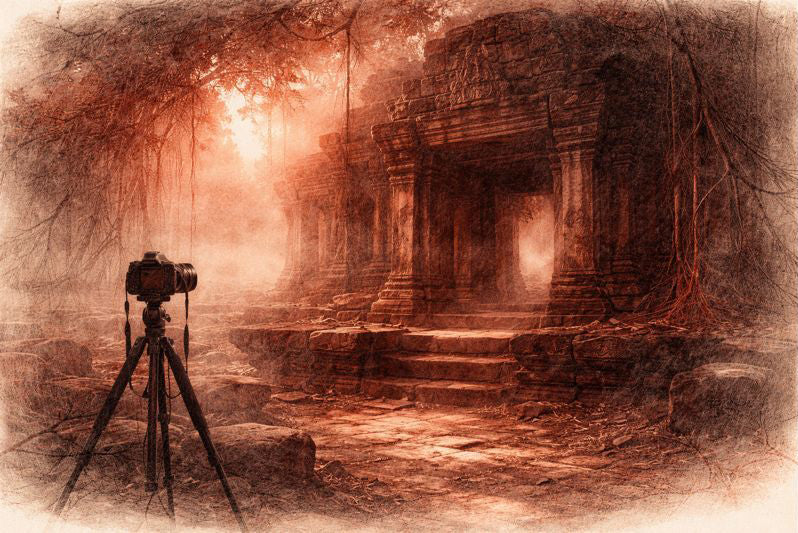
Before the Shutter Falls
3 min read
Before the shutter falls, fear sharpens and doubt measures the cost of waiting. In the quiet hours before dawn, the act of not-yet-beginning becomes a discipline of attention. This essay reflects on patience, restraint, and the quiet mercy that arrives when outcome loosens its hold.
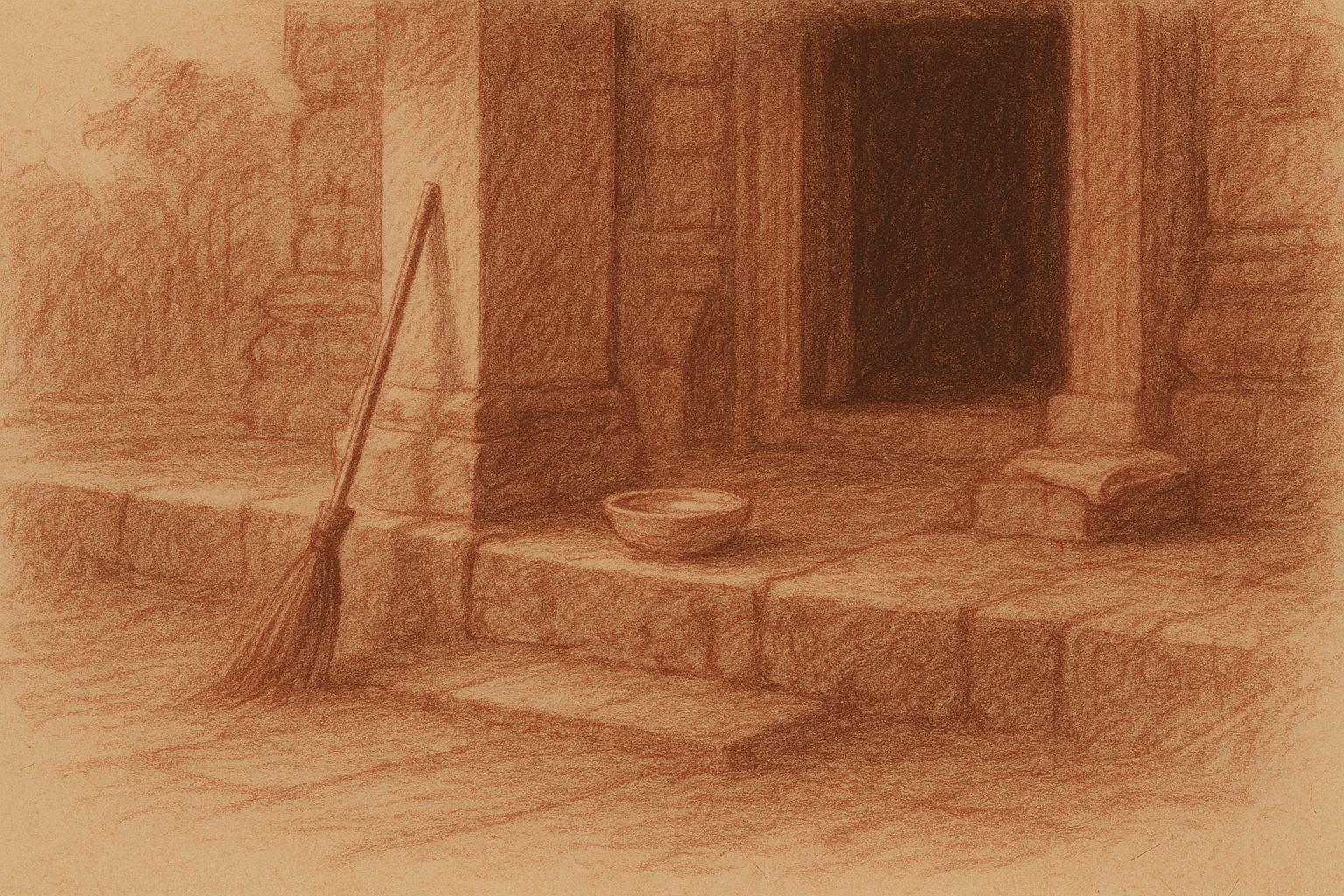
Those Who Keep the Way Open — On the Quiet Guardians of Angkor’s Thresholds
3 min read
Quiet gestures shape the way into Angkor — a swept stone, a refilled bowl, a hand steadying a guardian lion. This essay reflects on the unseen custodians whose daily care keeps the thresholds open, revealing how sacredness endures not through stone alone, but through those who tend its meaning.
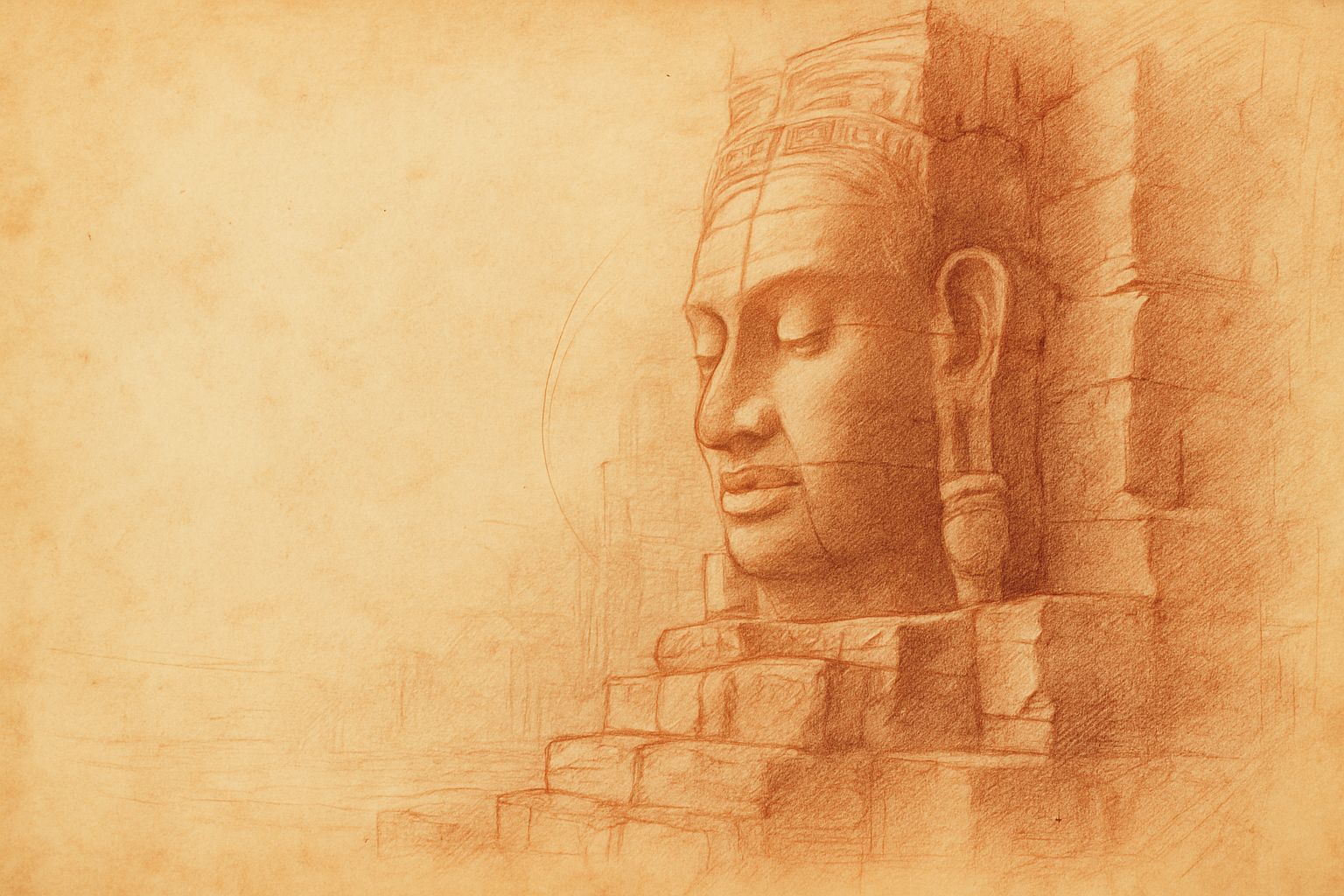
Multiplicity and Mercy — The Face Towers of Jayavarman VII
5 min read
A new vision of kingship rises at the Bayon: serene faces turned to every horizon, shaping a world where authority is expressed as care. Moving through the terraces, one enters a field of steady, compassionate presence — a landscape where stone, light, and time teach through quiet attention.
Join My Studio Journal
Receive occasional letters from my studio in Siem Reap—offering a glimpse into my creative process, early access to new fine art prints, field notes from the temples of Angkor, exhibition announcements, and reflections on beauty, impermanence, and the spirit of place.
No noise. No clutter. Just quiet inspiration, delivered gently.
Subscribe and stay connected to the unfolding story.
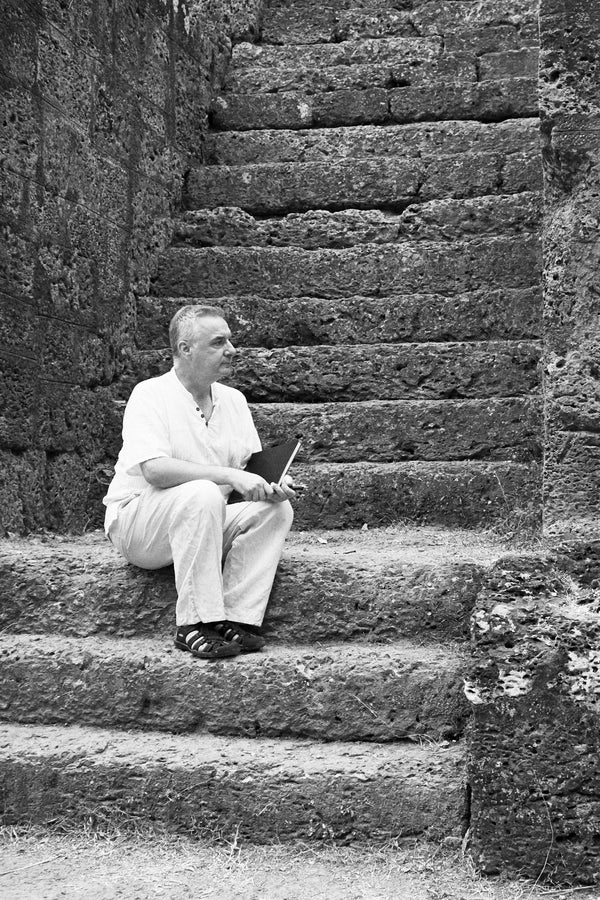
Join My Studio Journal
Receive occasional letters from my studio in Siem Reap—offering a glimpse into my creative process, early access to new fine art prints, field notes from the temples of Angkor, exhibition announcements, and reflections on beauty, impermanence, and the spirit of place.
No noise. No clutter. Just quiet inspiration, delivered gently.
Subscribe and stay connected to the unfolding story.
